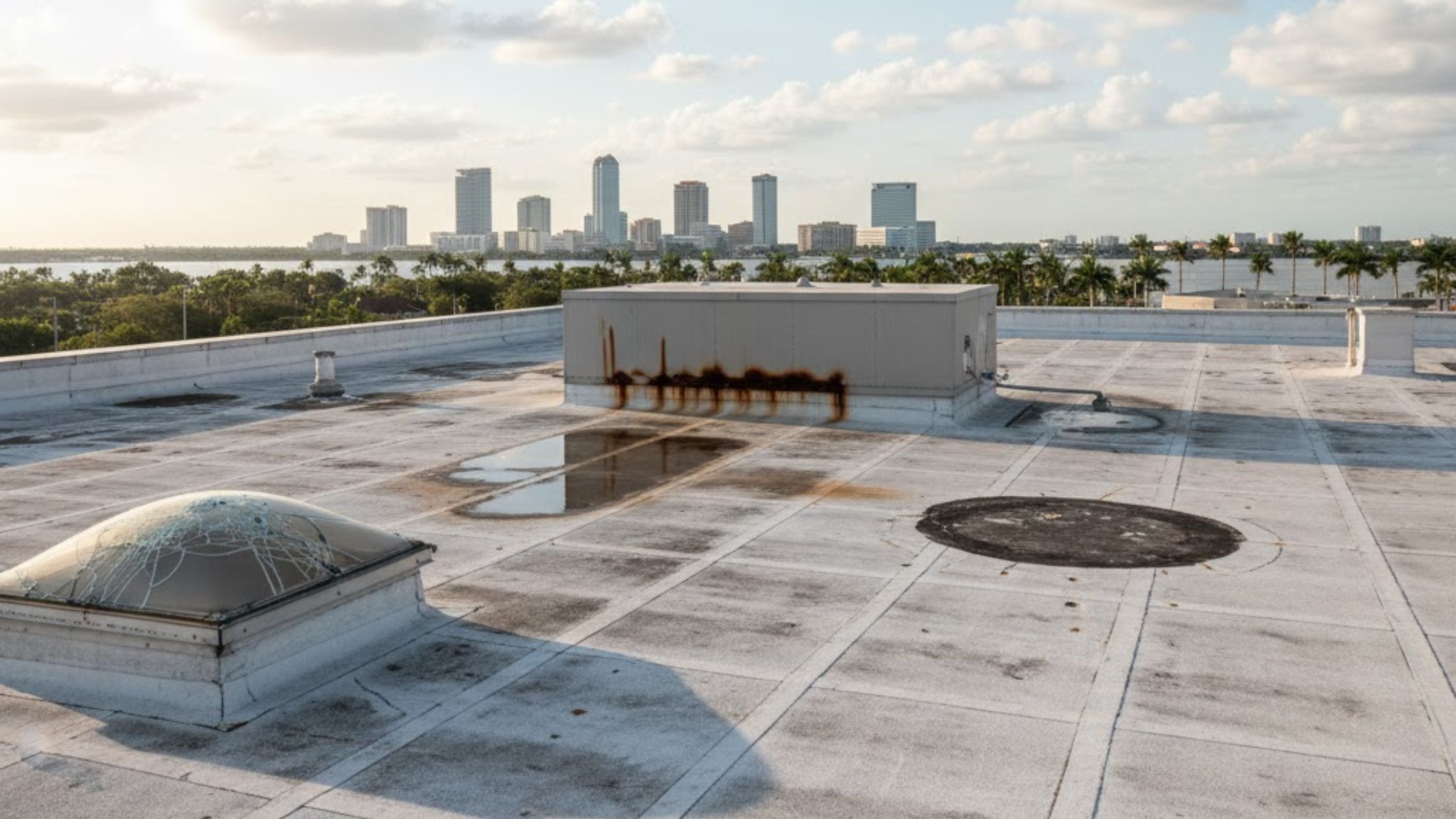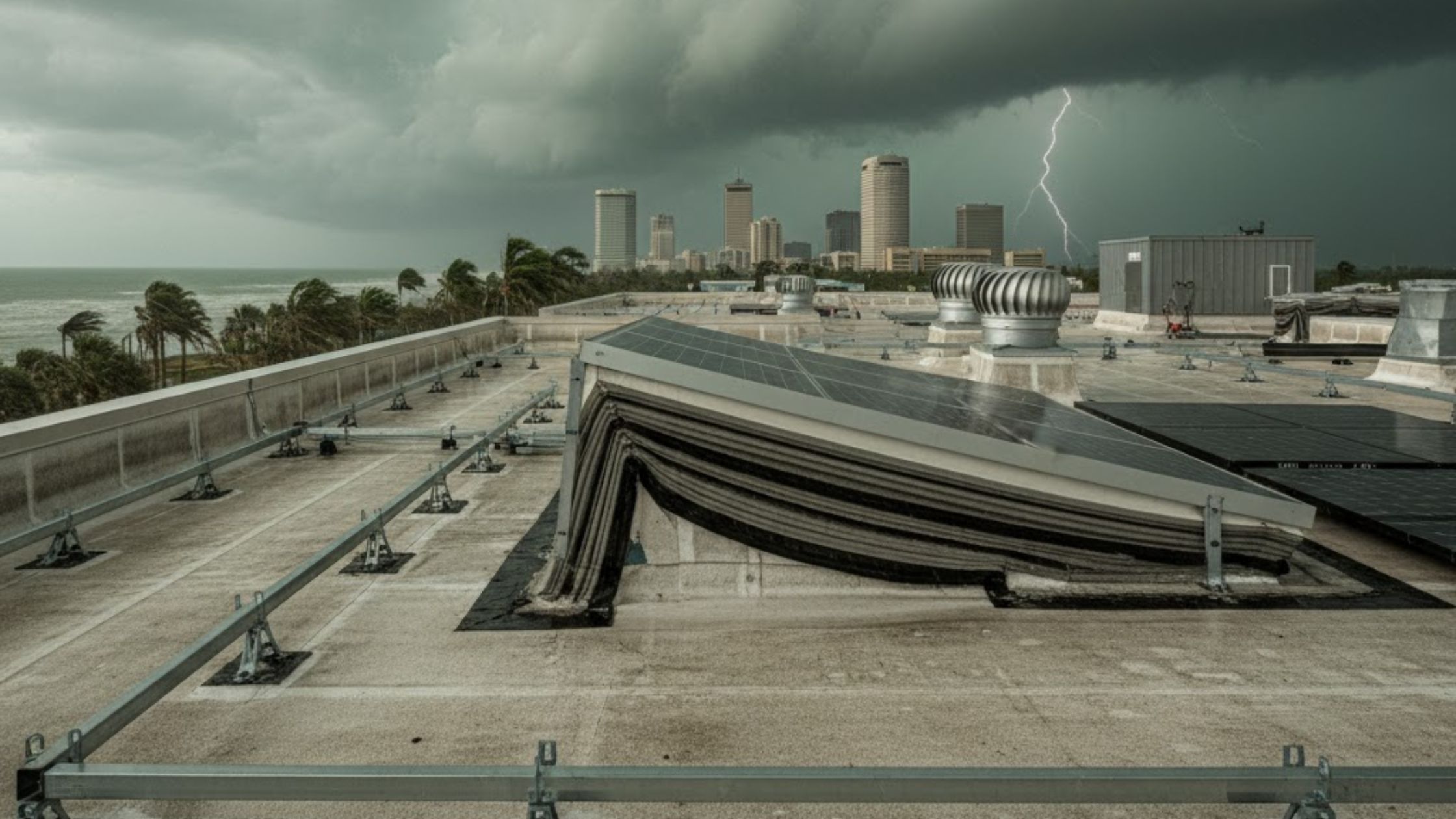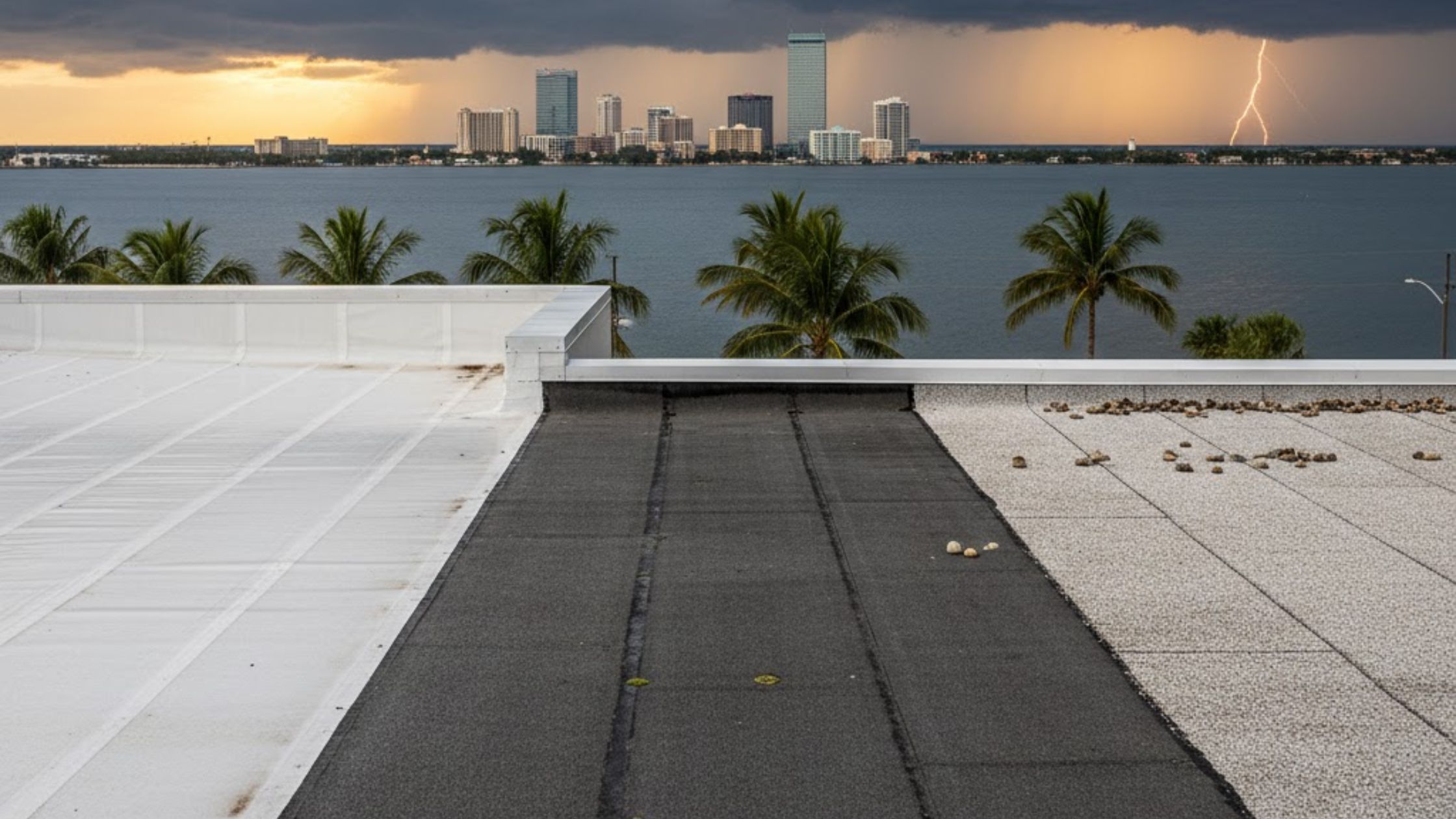How Can Tampa Businesses Extend the Life of Their Roof with Preventative Maintenance Contracts?
Tampa businesses can extend roof life and reduce repair costs with preventative maintenance contracts. Learn why proactive care is essential for durability.
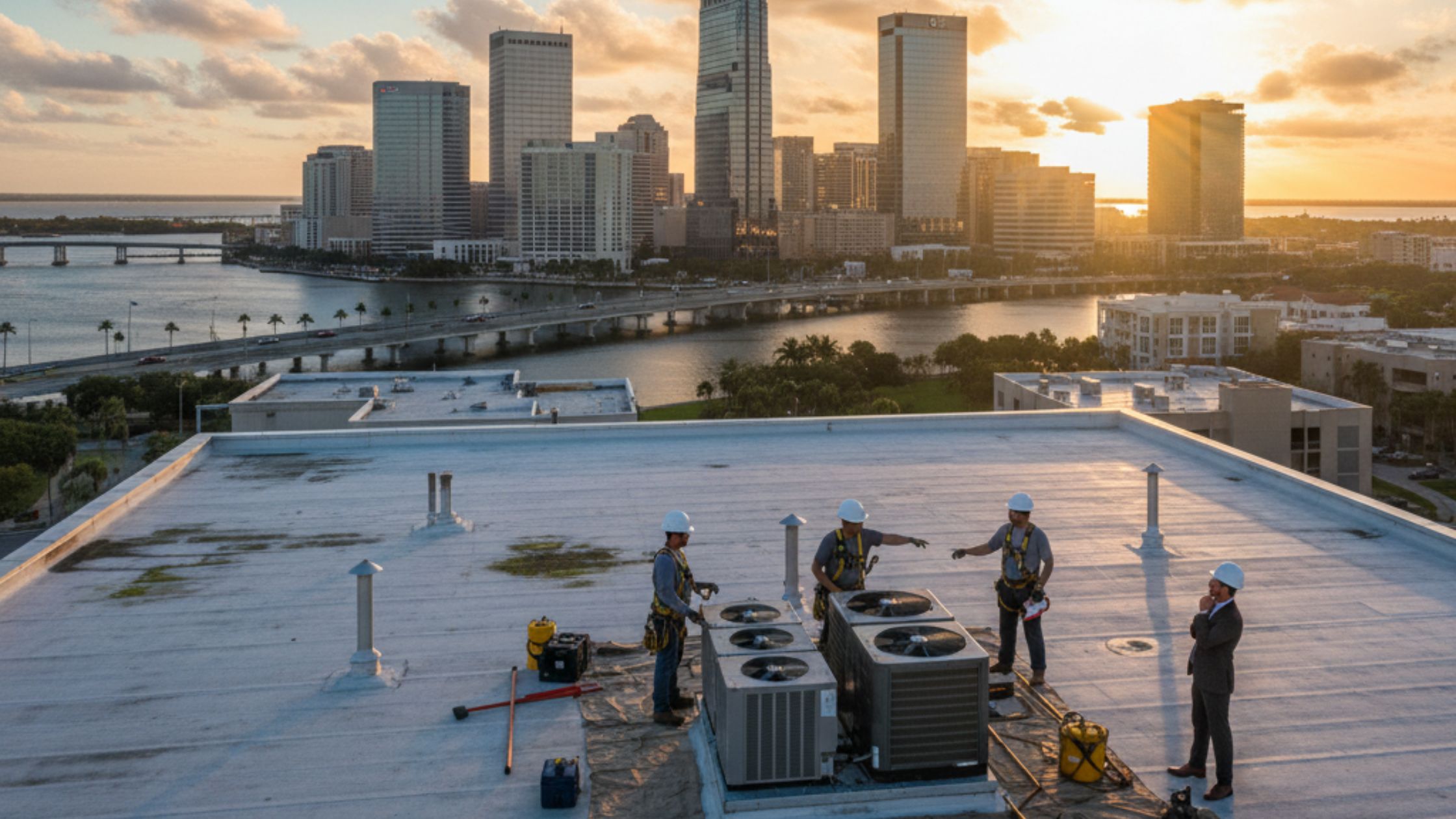
The roof of your commercial building in Tampa is arguably the most critical component of your property, acting as the primary shield against the relentless Florida sun, humidity, and intense seasonal storms. Neglecting this vital asset is not merely a risk; it is a guaranteed route to premature system failure, unexpected emergency repairs, and significant financial losses. Businesses that view their roof as a disposable item are missing a huge opportunity to protect their investment and optimize their operational budget. This proactive approach centers around securing a robust Commercial Roofing Tampa preventative maintenance plan.
For property managers and building owners, moving beyond reactive repairs to a structured commercial roof maintenance plan is the key to longevity. The unique sub-tropical climate of the Tampa Bay area places extraordinary stress on all roofing materials, accelerating degradation far faster than in other parts of the country. A customized, scheduled program ensures that minor defects are caught and addressed before they escalate into costly structural problems or internal water damage. This strategic choice safeguards the building’s integrity and maintains the value of the commercial property itself.
What Should a Commercial Roof Maintenance Contract in Tampa Include, and How Often Are Inspections Needed?
The scope of a high-quality commercial roof maintenance contract is comprehensive, extending well beyond a simple visual check of the roof surface. These agreements are fundamentally designed to reduce risk, control long-term costs, and ensure compliance with both warranty stipulations and local Florida building codes. When selecting a maintenance partner, the detail provided in the contract is paramount to guaranteeing full protection. An effective Commercial Roofing Tampa service must offer a holistic and technologically advanced approach to roof system management.
A standard yet thorough plan should mandate at least two formal, scheduled inspections Tampa businesses can rely on annually, typically one before the start of hurricane season and one afterward. These inspection points allow for the identification and repair of any wear and tear caused by the peak heat or the increased rain and wind activity. However, many experts suggest an additional inspection following any major weather event that brings extreme wind or localized flooding to the Tampa Bay region.
Core Components of an Essential Preventative Maintenance Contract
A detailed contract outlines the specific services and response times guaranteed by the roofing contractor. The goal of these preventative services is to maintain a watertight seal and ensure proper functionality of the entire roofing envelope. Simply signing an agreement for maintenance is not enough; the property owner must understand the precise tasks being performed during each visit to ensure value.
1. Comprehensive Roof System Inspections and Reporting
The inspection phase is the most critical element of any maintenance plan, serving as the diagnostic tool for the entire roof system. A professional contractor utilizes advanced techniques, such as drone footage and thermal mapping, to detect issues invisible to the naked eye. This technology helps to accurately pinpoint areas of saturated insulation beneath the membrane, a common problem for flat roof systems in humid climates.
The inspection must meticulously cover the membrane integrity, identifying any signs of blisters, tears, punctures, or shrinking that could compromise the waterproofing layer. Special attention is paid to transition points and flashings, which are the most common areas of failure on any commercial roof structure. Detailed reporting, including photo documentation and an electronic budget report, is essential for tracking the roof’s condition over time and assisting with long-term budgeting.
2. Cleaning and Debris Management
Ponding water and blocked drainage systems are silent killers of commercial roofs, especially on low slope and flat systems prevalent in the Tampa market. Maintenance crews must systematically clear all scuppers, internal drains, and perimeter gutters of debris, which often includes leaves, dirt, or construction remnants. Allowing water to stand on a roof surface for more than 48 hours dramatically accelerates membrane degradation.
Regular cleaning also involves removing dirt, mold, and mildew that can accumulate on the roof membrane, particularly on TPO and PVC systems. These accumulations can foster biological growth and reduce the roof’s reflective properties, leading to higher cooling costs. A clean roof surface helps to maintain the energy-saving qualities of modern, reflective systems.
3. Proactive Repair of Minor Defects
One of the greatest financial benefits of a maintenance plan is the prompt repair of small issues before they become major leaks. The contract should include provisions for immediate, small-scale repairs discovered during the inspection, preventing minor cracks from turning into massive moisture infiltration events. This typically involves resealing around penetrations like HVAC units, vents, and piping, and re-caulking loose flashing details.
The repair service should also include securing any loose sheet metal or trim around the roof's perimeter, a common area of failure during high-wind events. Immediate action on these minor items is far less expensive than reacting to a widespread leak that damages interior assets and disrupts business operations. The preventative roofing services are about mitigation, not crisis management.
The Unseen Value of a Commercial Roof Maintenance Program
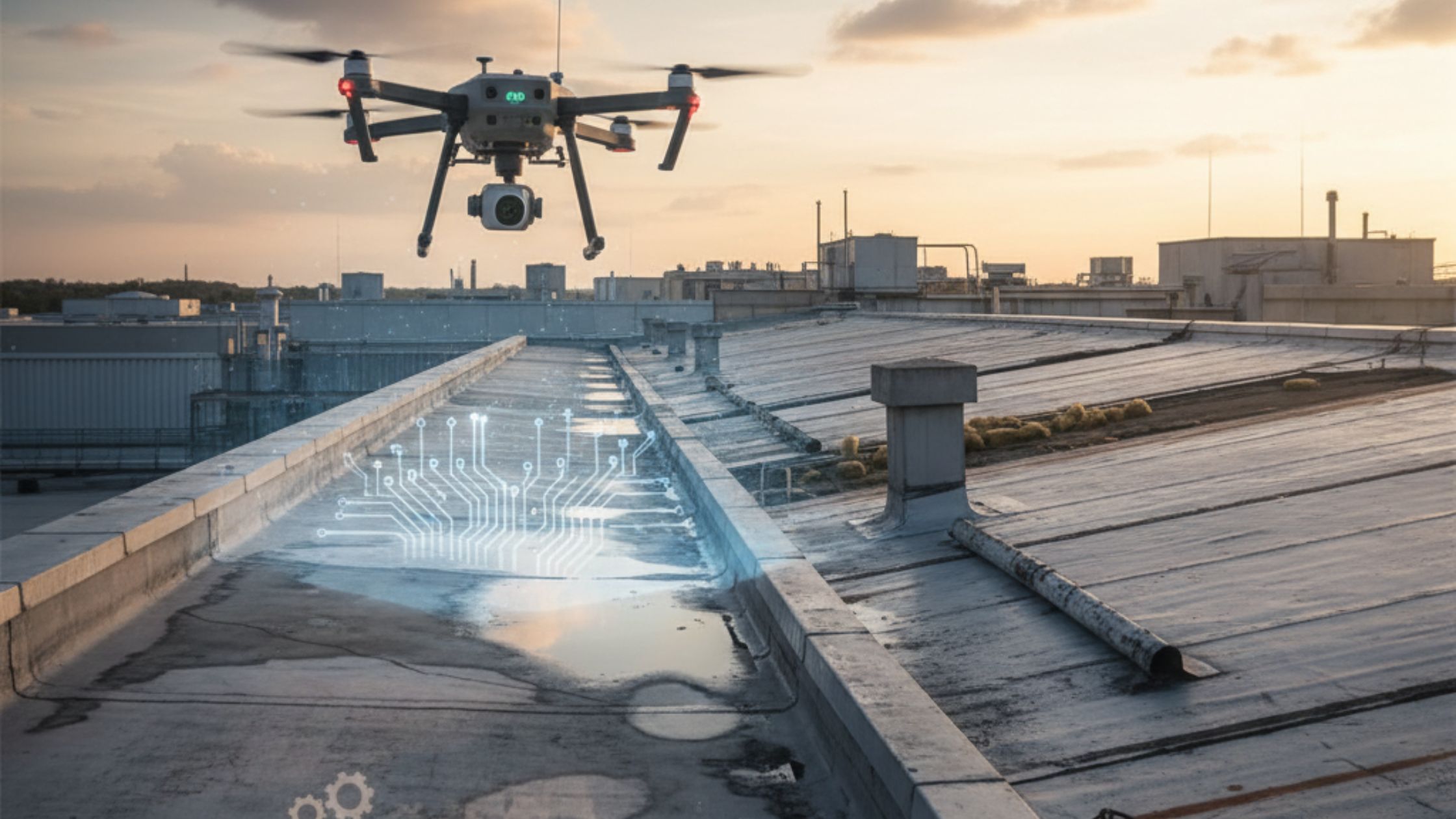
While the physical work of inspections and repairs is tangible, the most significant advantages of a professional maintenance program are often the intangible benefits. These programs transform the unpredictable cost of emergency repairs into a predictable operating expense, dramatically simplifying facility management. This consistent care is the difference between a roof that lasts its warranted lifespan and one that fails prematurely due to neglect.
Controlling Costs and Improving Financial Predictability
For facility managers, budget overruns are a constant threat, and few things cause larger, unscheduled expenditures than major roof failures. A fixed-cost maintenance contract provides a clear, budgeted line item, allowing for accurate forecasting of maintenance expenses. By avoiding expensive emergency service calls and large-scale, premature replacement projects, businesses save substantial capital.
Furthermore, a well-documented maintenance history often makes a difference when seeking insurance coverage or processing a claim. Insurers look favorably upon properties with proven scheduled inspections Tampa, as it demonstrates responsible property management and risk mitigation. This proactive documentation can expedite claim processing for genuine Storm Damage repairs and help negotiate lower premiums over time.
Upholding Manufacturer Warranties
Almost all manufacturer warranties for high-end commercial roofing systems such as TPO, PVC, and Modified Bitumen explicitly require regular, documented maintenance. Failure to adhere to these maintenance requirements is the number one reason a commercial roof warranty is voided when a claim is filed. The maintenance contract, executed by a certified contractor, serves as the definitive proof that the building owner has upheld their end of the warranty agreement.
If you are considering a new installation, or need to assess the health of your current roof, a full professional evaluation is the right place to begin. To explore your options for repair, replacement, or maintenance, you should check out the internal page dedicated to Commercial Roofing Tampa.
Addressing Tampa's Unique Climatic Challenges Through Maintenance
The Florida environment is uniquely harsh on commercial roofs, imposing pressures that differ significantly from other regions of the United States. High humidity, intense ultraviolet (UV) radiation, and extreme weather patterns require specialized materials and maintenance protocols. A generic roof maintenance program simply will not suffice for the specific needs of a building in the Tampa Bay area.
Mitigating the Impact of Sun and Heat
The intense solar exposure in Tampa accelerates the breakdown of roofing materials through a process called photo-oxidation. This is particularly noticeable on single-ply membranes like EPDM, where UV degradation can cause the material to become brittle and crack. Maintenance contracts address this by scheduling checks for material brittleness and recommending or applying reflective roof coating systems where appropriate. These coatings reflect sunlight, reducing the surface temperature of the roof and extending the life of the underlying membrane.
The constant heat also places tremendous stress on seams and flashings, causing materials to expand and contract repeatedly. Inspections must therefore focus intensely on the condition of the sealants and joint details. Prompt resealing of these moving parts is a core preventative roofing service that stops small seam separations from becoming significant water entry points.
Hurricane and Storm Damage Preparedness
The threat of hurricanes and tropical storms is an annual reality for any property in Florida. Maintenance contracts should specifically include a pre-season checklist and a post-storm emergency response protocol. Pre-season checks involve ensuring all mechanical equipment, such as HVAC units and rooftop fixtures, are securely fastened. This includes verifying the integrity of the base flashings and anchors.
During these critical assessments, the contractor will specifically look for potential issues related to wind uplift resistance. If you are interested in learning about how severe weather affects your fasteners and components, you can find valuable data regarding the Impact of Tampa coastal storms on roof fastening systems. Ensuring all perimeter edge metals and coping components are tightly secured can prevent a small amount of wind damage from escalating into a catastrophic roof failure requiring a complete replacement.
Different Roofing Systems: Custom Maintenance for Maximum Lifespan
The maintenance strategy must be precisely tailored to the specific commercial roofing system installed on your facility. A flat TPO roof requires a very different approach than a steep slope metal roof. Understanding the material-specific vulnerabilities is essential for extending the life of your specific roof.
Maintenance for Flat and Low-Slope Membranes (TPO, PVC, EPDM)
.jpg)
These single-ply systems are popular on commercial buildings due to their durability and ease of installation. However, they are highly susceptible to punctures from dropped tools, walking traffic, or falling debris. Maintenance plans for these roofs must emphasize frequent visual inspections for cuts or holes in the membrane.
Additionally, the seams on these roofs are the most vulnerable spots. While heat-welded seams (like on TPO and PVC) are stronger than those on EPDM, all seams must be checked for separation, especially around stress points like corners and transitions. Any ponding water must be addressed to prevent the accelerated breakdown of the seam adhesives and membrane plasticizers.
Maintenance for Metal Roofing Systems
Metal Roofing systems are known for their exceptional longevity, often exceeding 30 to 50 years with proper care, and they are becoming increasingly popular for Commercial Roofing Tampa projects. However, metal roofs require specific maintenance focused on their fasteners and coatings. The key issue is protecting against corrosion, which is exacerbated by the salty air of the Tampa Bay coastal region.
Maintenance involves checking for any loose or backing-out exposed fasteners, which can create points of water entry. Any scratches in the metal panels’ protective coating must be immediately repaired with manufacturer-approved touch-up paint to prevent rust. An inspection must also look for "oil canning," which is a visual waviness in the flat area of a metal panel that, while not a structural issue, can indicate installation issues that lead to water pooling.
Maintenance for Built-Up Roofing (BUR) and Modified Bitumen
These multi-layer asphalt-based systems require maintenance focused on flood coating integrity and blistering. The Built-Up Roofing or Mod-Bit surface needs to be inspected for cracks, alligatoring (surface cracking resembling alligator hide), and gravel displacement. Missing gravel must be replenished to protect the underlying asphalt layers from UV exposure.
Another crucial maintenance point is the identification and repair of bubbles or blisters in the membrane. These areas indicate trapped moisture or air which, if not addressed, can rupture and lead to serious water intrusion. Contractors specializing in these systems will prioritize proper patching techniques to maintain the system's monolithic barrier.
Strategic Planning: Finance, Energy, and Compliance
The decision to invest in a premium maintenance contract is also a strategic financial and operational choice that impacts areas beyond leak prevention. These programs directly influence a building’s energy efficiency, regulatory compliance, and budget health.
Maximizing Energy Efficiency
An unmaintained roof directly translates to higher utility bills, especially in the intense Florida heat. Dirt, discoloration, and membrane degradation reduce the reflectivity of a cool roof system, causing the building to absorb more solar heat. Maintenance ensures the roof stays clean and reflective, thereby keeping the building cooler.
If your commercial building requires significant upgrades to meet modern energy efficiency standards, you should explore the benefits of modern cool roofing technologies on the dedicated page for Tampa commercial roofing for energy savings. A clean, well-maintained roof system is a prerequisite for maximizing any energy-related financial returns. This approach reduces the load on the building's HVAC units, leading to lower consumption and operational cost savings.
Financial Tools and Investment Protection
While preventative maintenance is a budgeted expense, larger repair or restoration projects often require significant capital. Understanding the available financial mechanisms is crucial for property owners. Many trusted commercial roofing partners offer financial flexibility to ensure necessary work can be performed without draining emergency reserves.
A key part of the modern contract conversation involves clarifying how major repair costs can be managed. You can find detailed information on available options to spread the cost over time by checking out financing option for your business. Utilizing a line of credit or payment plan for a restoration project can free up capital for other business needs.
Leveraging Tax Incentives and Deductions
Maintenance costs are generally operating expenses, but major roof replacements or significant restorations might qualify for tax advantages. The distinction between a repair and a capital improvement is important for accounting purposes. A property owner should consult with a financial professional about the potential for utilizing specific tax deductions.
To fully understand the financial landscape surrounding roof investment and maintenance in the Tampa market, a review of the internal resource detailing Commercial roofing financing and tax incentives in Tampa is highly recommended. These resources help businesses maximize the financial return on their roof investment.
The Role of Advanced Technology in Preventative Maintenance
Modern commercial roof maintenance plan services are increasingly reliant on technology to improve efficiency, accuracy, and documentation. Gone are the days when a simple visual inspection was considered adequate; today’s preventative care is driven by data.
Drone Inspections and Thermal Imaging
Drone technology allows for the rapid, safe, and detailed inspection of the entire roof surface, providing high-resolution imagery and video documentation of every square foot. This is invaluable for documenting the starting condition of a roof and for tracking changes over time. More importantly, drones can carry thermal imaging cameras.
Thermal imaging uses infrared technology to detect subtle temperature differences on the roof surface. These differences often indicate the presence of moisture trapped beneath the membrane and insulation. Identifying this subsurface moisture early is critical, as it allows for targeted repairs instead of costly, full-scale tear-offs.
Digital Roof Management Platforms
Leading roofing contractors utilize digital platforms for storing all inspection reports, repair histories, photos, and warranty information. This system creates a secure, accessible Accurate Maintenance Record for the building owner and facility manager. This level of documentation is invaluable during warranty claims or when preparing for an upcoming sale of the property.
These platforms enable contractors to schedule routine inspections automatically and provide the property manager with real-time updates on the roof's condition. The transparency and ease of access afforded by digital management ensure a true partnership between the contractor and the building owner.
Safety and Compliance: Non-Negotiable Aspects of Service
Any commercial operation, particularly those involving rooftop work, must prioritize safety and regulatory compliance. A professional commercial roof maintenance plan always includes strict adherence to OSHA guidelines and local Tampa building codes.
The safety of the contractor's crew, your employees, and your customers must be the highest priority. Reputable contractors invest heavily in comprehensive safety training, proper fall protection equipment, and detailed site-specific safety plans. Never compromise on safety to save on cost; the potential liability is far too great.
If you are evaluating different roofing providers in the region, ensure their safety track record is impeccable. You can gain further insight into the required industry standards by visiting the page on Roofing contractor safety standards in Tampa. A commitment to safety reflects a commitment to professionalism and quality in all aspects of the job.
The Economic Logic of Scheduled Inspections Tampa Businesses Trust
The decision to implement a robust maintenance contract is purely a logical one rooted in long-term financial strategy. The minor, predictable cost of a scheduled inspections Tampa service is exponentially less than the expense of emergency repairs or a premature roof replacement.
Consider the cost of internal damage: damaged inventory, mold remediation in offices, disrupted operations, and the subsequent loss of tenants or business. A roof leak doesn't just damage the ceiling tile; it can shut down a crucial part of your operation. Preventative roofing services are essentially an insurance policy against business interruption. They ensure continuity and minimize the risk of unbudgeted downtime.
The life expectancy of a standard TPO roof is approximately 15-20 years. Consistent, expert maintenance can easily push that to the upper range or even beyond, potentially saving the property owner the entire cost of a roof replacement project. This extension of useful service life is the single most valuable financial return on a maintenance investment.
To fully appreciate the cost savings associated with improved thermal performance, it is helpful to look at how specific materials contribute to energy savings. The impact of high-quality material is immense, especially when coupled with routine care. We have an extensive resource that details Roof insulation benefits for Tampa’s hot climate which can guide you in making the most thermally efficient choices for your building.
Understanding Your Maintenance Contract Options
Maintenance agreements are not one-size-fits-all; they are flexible and can be customized to the age, condition, and material of your specific roof. A consultation with a qualified roofing professional will help determine the optimal service level for your needs and budget.
Standard Maintenance Agreements
This is the most common form of agreement, typically including two annual inspections, cleaning of debris and drainage systems, and photographic reporting. It often includes an allowance for minor repairs like resealing penetrations and small membrane patches. This is a foundational plan ideal for newer roofs still under a manufacturer’s warranty.
Full Service or Secure Roof Management Programs
These premium contracts offer a greater scope of service and significantly enhance risk management. They often include an extended warranty that covers both materials and workmanship, essentially removing the property owner's responsibility for most repairs. These contracts provide priority scheduling for emergency services and a more proactive management style, including annual meetings to review roof health and future budgeting.
Customized Plans for High-Risk Buildings
Buildings with unusual roof structures, high-traffic rooftop access, or those located in extreme coastal exposure may require a bespoke maintenance program. These plans may mandate more frequent inspections, specialized leak detection services, and immediate post-storm emergency tarping or repair services. The plan is built entirely around the specific operational risks of the facility.
Frequently Asked Questions (FAQs) About Commercial Roof Maintenance in Tampa
1. How does commercial roof maintenance affect my insurance policy?
Regular, documented maintenance strengthens your position with insurance providers by demonstrating due diligence, which can lead to smoother claims processing and potentially lower premiums. Insurance policies may even require proof of a preventative roofing service schedule to validate coverage for some types of storm-related claims.
2. Is it better to repair a commercial roof or replace it?
The decision depends on the root cause of the damage and the roof's age. If the roof has sustained widespread damage, is nearing the end of its typical lifespan (e.g., a TPO Roofing system over 18 years old), or has moisture saturation exceeding 25%, replacement is usually the better long-term financial decision. Maintenance is designed to delay this decision, not eliminate it entirely.
3. What is the average cost of a commercial roof maintenance contract in Tampa?
The cost varies widely based on the roof size (square footage), the complexity (number of penetrations and slope), and the material (e.g., metal versus single-ply). However, the general industry consensus is that investing $0.03 to $0.10 per square foot annually in maintenance can save property owners over $1.00 per square foot in emergency repairs and premature replacement costs.
4. What is ponding water and why is it so damaging to a flat roof?
Ponding water is water that remains on the roof surface for more than 48 hours after a rainfall. It is detrimental because it accelerates UV degradation, places excessive static load stress on the structure, and allows algae and microbial growth to break down the roofing membrane and seam adhesives. Maintenance includes clearing blockages and addressing minor structural issues causing the ponding.
5. What are common red flags I should look for when hiring a commercial roofing contractor?
Key red flags include extremely low bids (indicating potential corner-cutting on labor or materials), a lack of local references, unwillingness to provide proof of current liability insurance and licensing, and a maintenance contract that does not explicitly include detailed reporting or emergency response times. Always verify that a company maintains high Roofing contractor safety standards in Tampa.
Conclusion: Securing Your Commercial Future with Proactive Care
The life of your commercial roof is not predetermined by the calendar; it is directly managed by the quality of care it receives. In a challenging environment like Tampa, where the climate constantly tests the durability of your structure, a commercial roof maintenance plan is an indispensable tool for business longevity and financial stability. By proactively addressing minor wear, maintaining crucial warranty protection, and controlling unbudgeted costs, you are not simply maintaining a roof—you are securing your entire commercial operation.
Choosing a partner that understands the specific challenges of Commercial Roofing Tampa and offers comprehensive, digitally-supported maintenance programs is the most prudent decision any property manager can make. The team at CB Roofing Solutions provides tailored maintenance contracts, leveraging advanced technology and decades of local expertise to protect your investment and ensure maximum roof performance for years to come. To begin securing your commercial roof’s future with a comprehensive maintenance package, please contact us today for a consultation.

